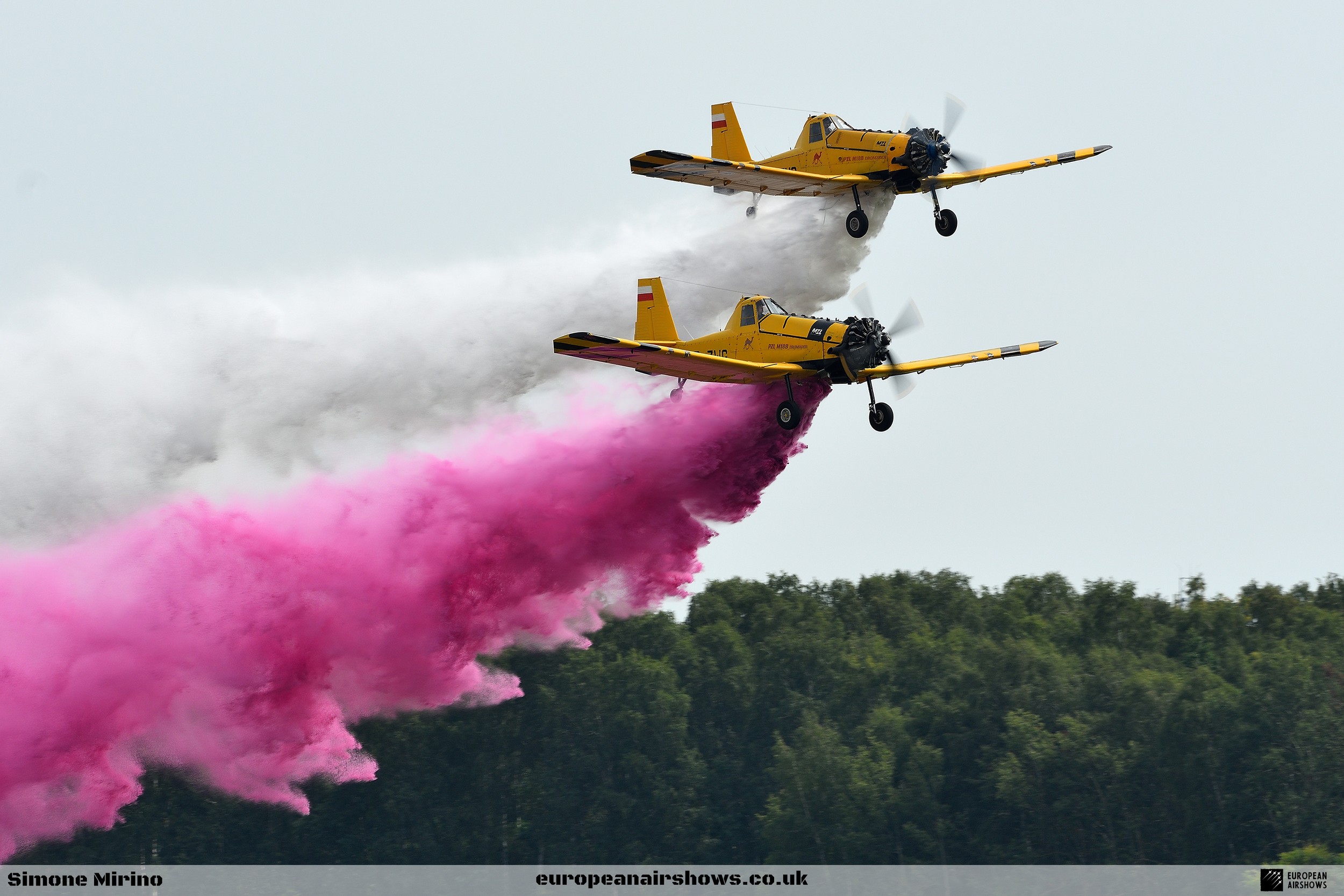
August 27 / PZL-Mielec M-18 Dromader first flight
First Flight 27 August 1976
PZL-Mielec M-18 Dromader
The PZL-Mielec M-18 Dromader is a versatile single-engine aircraft designed specifically for agricultural purposes. It is manufactured by the Polish company PZL-Mielec, which is renowned for producing reliable and robust aircraft. The M-18 Dromader is a popular choice for crop dusting due to its large carrying capacity and excellent manoeuvrability. Its powerful engine and advanced avionics systems make it ideal for spraying crops with precision and accuracy.
Apart from crop dusting, the M-18 Dromader is also widely used as a firefighting machine. Its ability to carry large amounts of water or fire retardant makes it a valuable asset in fighting forest fires and other types of wildfires. The aircraft's rugged construction and specialized firefighting equipment allow it to operate in harsh and challenging environments, making it an essential tool for firefighting teams around the world.
The PZL-Mielec M-18 Dromader is a competent aircraft that has proven itself to be a reliable workhorse in a variety of applications. Its versatility, durability, and exceptional performance make it an excellent choice for anyone looking for a high-quality agricultural or firefighting aircraft.
PZL-Mielec, previously known as WSK-Mielec, began designing the M-18 Dromader aircraft in the mid-1970s with the assistance of Rockwell International, a United States aircraft manufacturer. The company sought Rockwell's help due to the political situation at the time. As a company located in an Eastern Bloc country, PZL aimed to sell the aircraft worldwide, and they realized that certification by the United States Federal Aviation Administration would be essential in reaching that goal.
Rockwell was interested in fitting Polish high-power radial engines into their agricultural planes. This cooperation led to the Rockwell Thrush Commander aircraft being fitted with the PZL-3 engine and the Polish engineers creating the higher payload M-18 Dromader. They introduced the more powerful ASz-62 engine, made structural changes to the airframe, and increased dimensions. The cooperation resulted in the Dromader sharing outer wing panels and part of the fuselage with the Thrush Commander.
On August 27, 1976, the first prototype of the aircraft took flight. In September 1978, the aircraft was certified to fly in Poland, with certifications from many countries around the world following soon after.
The M-18 Dromader aircraft and its variations can still be seen worldwide. They were sold to 24 countries, and over 200 are used in the US. In 2008, China bought fifteen aircraft, and in 2012, PZL-Mielec was still selling M-18B and M-18BS models, with a total of 759 built. As of 2017, the production of the Dromader has been halted, but PZL-Mielec still refurbishes existing aircraft with new engines produced by WSK "PZL-Kalisz". There are plans to acquire rights and renew the production in WZL-2 in Bydgoszcz.
The Dromader has been a successful aircraft due to its durability, reliability, and high performance in agricultural operations. It has been used for crop dusting, firefighting, and for transporting cargo and passengers. The aircraft's unique design and engineering have made it a popular choice for many countries worldwide.
Chipmunk Facts
Origin: The M-18 Dromader was designed and developed in Poland in the late 1950s by PZL (Państwowe Zakłady Lotnicze). It was specifically created for agricultural aviation, focusing on the aerial application of fertilizers and pesticides.
Low-Wing Configuration: The M-18 features a low-wing design, which allows for better visibility and accessibility for the pilot during aerial application tasks. This configuration also enhances stability during flight.
High Payload Capacity: The aircraft can carry a substantial payload of up to 1,000 liters (approximately 264 gallons) of agricultural chemicals, making it effective for large-scale crop dusting and spraying operations.
Short Takeoff and Landing (STOL): The Dromader is known for its STOL capabilities, enabling it to operate from short and unpaved airstrips. This is particularly useful for agricultural operations in remote or rural areas.
Meaning of Dromader: The name “Dromader” translates to “dromedary” in English, which reflects the aircraft’s ability to operate in a variety of environments, similar to how the dromedary camel is well-adapted to arid regions.
Engine Variants: The M-18 Dromader is powered by the PZL Kalisz ASz-621R, a 9-cylinder air-cooled radial piston engine producing 980 horsepower. This engine is a Polish-built version of the Soviet Shvetsov ASh-62.
Global Reach: The M-18 Dromader has been exported to numerous countries around the world, including those in Europe, Africa, and South America. Its versatility and effectiveness in agricultural applications have made it popular in various regions.
Cockpit Design: The cockpit of the M-18 Dromader is designed for optimal visibility, allowing pilots to have a clear view of the ground during spraying operations. This is crucial for the accurate application of agricultural chemicals.
Production Numbers: Over 1,000 units of the M-18 Dromader have been built since its introduction, making it one of the more successful agricultural aircraft designs in history.
Legacy and Influence: The M-18 Dromader has influenced the design of other agricultural aircraft and continues to be a reference point for developing new aerial application technologies. Its robust design and operational capabilities have set a standard in the field of agricultural aviation.




